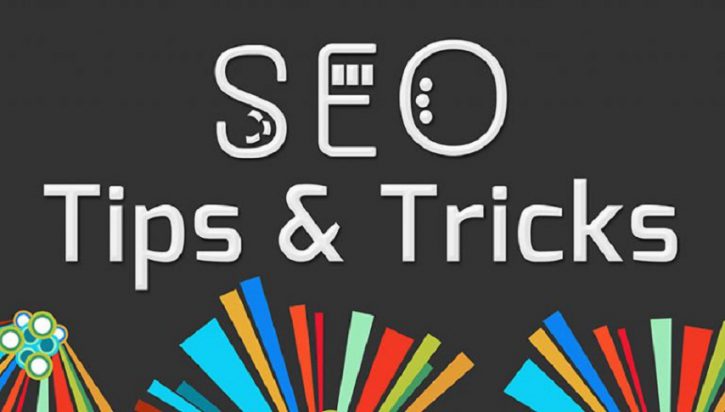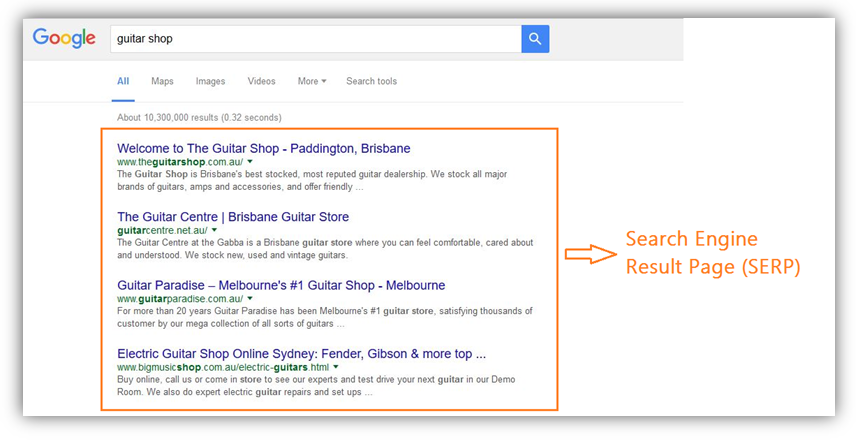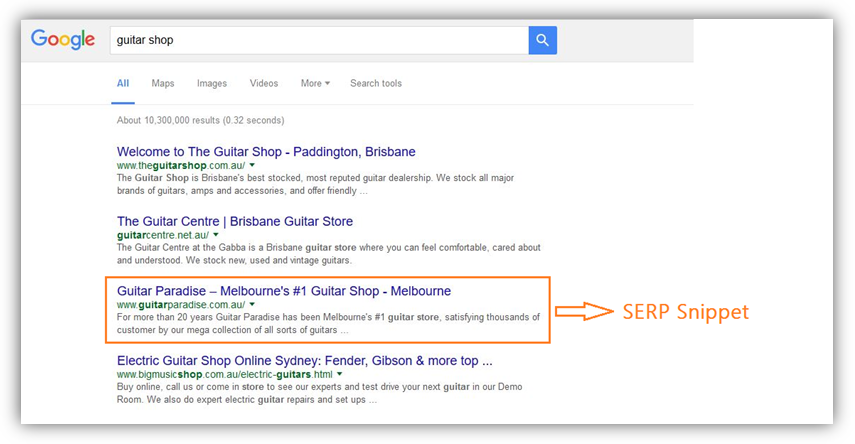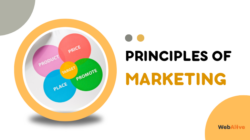
5 Quick SEO Tips to Boost Your Website’s Organic Traffic
This is over and over proven by researches and studies that most of the internet traffic is generated by the search engines. Moreover, B2B and B2C business websites get 51% traffic from organic search result which is encouraging news for business owners.
This also insinuates that the competition to make one’s website rank among the top 20 positions of SERP for a particular keyword is fiercer than ever as millions of other web pages are vying for the same rank for that very keyword query.
Well, to accomplish the mean feat, though one doesn’t have to take resort to magic, voodoo or black art, the practice of search engine optimisation – only which can get one’s website to rank top in search engine results – is sophisticated and involved on its own.
The practise of SEO is not only a continuous process but also requires consistent supervision and updating. However, there are some basic and simple concepts about SEO, learning and aptly implementing which can guarantee one’s website ranking improvement.
An elaborate learning of SEO can be a real challenge and a daunting experience for a substantial period of time. But to make things a little bit smoother, here we have broken down some integral SEO concepts into bite-sized chunks. Below are some important SEO concepts which if understood properly will make it easier to master the basic art of SEO.
Related article: 13 Basic SEO Tips for Business Owners to Get Started
1. SERP Snippet Optimisation
First, we have to understand what is denoted by SERP snippet or what is SERP snippet optimisation.
What is SERP?
When we search for something in google or any other search engine by typing something in the search box, the result that we see is called the search engine result page or in short “SERP”.
Depending on the keyword that you typed into the search box, the SERP might look different (e.g.: sometimes it will show maps or videos).
What is SERP Snippet?
A typical search engine result page consists of 10 results each of which is called “SERP Snippet”.
A SERP Snippet is again divided into three sections. They are
- Page Title
- URL
- A short text description / Meta Description
Let’s have a look at what each SERP snippet element mean:
Page Title: Page title is the title of a web page. In the SERP result. The page title should be written between 55 to 60 characters so that search engines can show it in the result.
If you put your targeted keyword in the page title in a meaningful way then there is a good chance that the page will be ranked for the targeted keyword. So a Page Title should be optimised for the keyword.
Meta Descriptions: The description inside an HTML tag that summarises the web page content, have a limit of 156 characters is called a meta description. In a case of mobile, the limit is reduced to 120 characters.
When the limit exceeds the description trails off the same way as page titles with an ellipsis. Though no direct ranking effect is attributed to meta descriptions, keyword rich meta description is tremendously important as this definitely contributes to gain user click-through (CTR) from SERPs and helps define the web page relevant to the query for Google and other search engines.
URL: URL is the single most important component of SERP Snippet. Search engines remember your web pages with URL. So once your web page gets good ranking it is not recommended to change the URL which might cause rank fall. Creating short, meaningful and keyword optimised URL is strongly recommended.
Related article: A Complete Guide to SEO Friendly URLs
2. Internal and External Links Optimisation
What is Internal Link?
The links in a website that go from one page of a domain to a totally different page of the very same domain are termed as internal links. They are mainly used for the purpose of easy navigation.
For 3 important reasons Internal links are useful:
- Allowing users to smoothly navigate a website
- Establish proper information hierarchy for any given website
- To spread link juice around websites
Best Practice for Internal Links
Web pages should have a crawlable link structure to reap the best result of registering the pages of a website in SERP. Properly implemented internal link optimisation can just help with that.
The pages that are not ranking high enough in SERP are such pages which can reap benefits from internal linking. While linking to a page of comparatively better authority and SEO value can give the poorly ranked pages a powerful push forward in SERP.
What is External Link?
External Links are actually the hyperlinks that point to any external domain other than the source domain.
In layman word of explanation, if another website establishes a link connected to your website, then that is considered an external link to your site.
Best Practice for External Links
According to SEO experts, external links are the most imperative source of organic ranking. External links provide link juice more effectively and profusely than internal links as the search engines consider those a vote of confidence received from third-party.
External links functions as a decisive ranking factor as Search engines resort to this factor of external links presence in a particular web page to determine the popularity of a given web page.
Use of External links not only helps a website to connect to other websites but also helps webmasters build relationships. Linking externally is a regularly found trend among bloggers as this is a proven method of bringing more visitors to the website as well.
SEO wise, external links are important for two main reasons:
1. Popularity: External Links are considered as a more stable metric for the popularity of the web page, which also happens to be the more easily measurable metric.
2. Relevancy: External Links from third party websites imply relevancy for a web page content that is extremely valuable for major search engines.
Some of the metrics that major search engines use to determine the value of external links are the following:
- The Credibility of the external linking domain.
- The popularity of the linking page.
- The content relevancy between the source page and the destination page.
- Used anchor text for the link.
- Source Page’s amount of links to the same page.
- The number of domains that link to the link destination page.
Anchor Text and Relevant Importance
Anchor Texts are basically texts that link to another location or document on the web. Precisely to say, the clickable text part of a hyperlink is anchor text.
Take this sentence as an example –Google gives a result for any search query, “Google” is the anchor text here. This is created using simple HTML code like the following:
<a href=”http://www.google.com”>Google</a>
As much as backlinks are considered an important SEO ranking factor, anchor text plays a pivotal role in establishing backlinks significance.
3. Anchor Text Optimization
Here we have listed some more definitive and useful tips which are widely used to optimise web page anchor text without overdoing the process which might result into being penalised by Google:
All Relevant Anchor Text
Anchor texts only bear favourable result, when those are mapped out and used in the most suitable content pertinent way. The more relevant the target anchor text keyword is to the web page content or article, the better it will rank in SERP.
Clever Distribution of Different Anchor Text types
Although there is no universal rule on how to optimise anchor text the best practice is:
Branded Anchor text: 40%
Unique/Other anchor text: 25%
Naked link anchor: 15%
Brand + keyword anchor: 5%
Partial match anchor text: 5%
Generic anchor text: 1-5%
Long tail anchor text: 2-4%
Exact Match Anchors: Less Than 1%
So thoroughly conducted research is recommended for the best anchor text distribution result.
No Toxic Sites
Some domain are toxic in the sense that they have a bad reputation in google and other search engines. If your website is linked to this type of domain, it could hurt your ranking. How do you know which websites are toxic?
There are many third-party tools available to check the credential of a domain. For example, open site explorer gives a spam score of a domain. High spam score means the domain is likely to be a toxic domain and you should avoid linking to them.
Avoiding Internal Linking with keyword-rich anchors
Internal linking is highly recommended by search engines, as long as those are not done with any keyword-rich anchor texts. The simple and straightforward reason is – using too many keyword-rich anchors puts a heavy negative impact on the link profile.
Anchor Texts Tracking
The proper tracking of used anchor texts is crucial for building backlinks. Not tracking anchor texts are tantamount to taking a leap of faith and that is even being blindfolded. Excel spreadsheet can be used for systematic tracking of anchor text that can even help to avoid anchor text overusing.
There is no doubt that optimising the anchor texts of one’s website is inarguably tricky and sensitive. Novice Internet marketers often make the fatal mistake of over-optimizing web page anchor text, which inevitably results in conceding penalties from search engines.
4. Social Profiles Optimisation for SEO
Social Media Marketing, commonly known as SMM, is important in and of itself, and some SEO experts and Internet marketers underline the importance it bears for search engine optimisation (SEO) and online reputation management as well.
Social Profiles of a web page can be optimised for better rankings and search visibility. It only requires one to just input relevant keywords or phrases in the respective profile or page names to enable those to rank best on Google or within the social network search itself.
A point to be addressed with more importance is that social signals have evidently a direct and indirect impact on web pages organic search ranking. Social Signals, which also goes by the name social proof, are basically the likes, shares, votes, pins, views or every other social media metrics on mass social media like Facebook, Twitter, LinkedIn etc. For a website, direct impacts of social signals are driven or derived from all these.
Indirect impact involves citations generated from brand awareness, improved inbound links from the augmented online visibility, bounce rate reduction coupled with more time on site and frequent visitors. Social signals, since their introduction and mass application in recent years, have become extremely integral in terms of their impact value on SEO.
5. Upgrade Outdated Content
Suppose your website has a blog and it sends a significant amount of traffic to the product or service page. Obviously, some of the content which was relevant a few years ago will be outdated today. By republishing this content you can easily leverage the SEO benefits because search engines love fresh new content.
The above-mentioned points will give you a rough idea about SEO. As mentioned earlier, SEO is a skill and a lot of effort is needed to master it. However, if you read this article carefully so far hopefully, you got a brief idea about SEO.
You read a lot. We like that
Want to take your online business to the next level? Get the tips and insights that matter.



